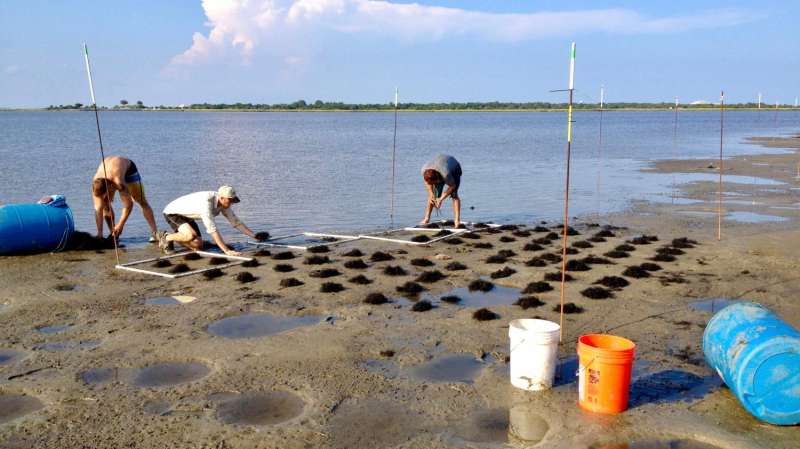Invasive plant species can enhance coastal ecosystems

Invasive plant species can be a source of valuable ecosystem functions where native coastal habitats such as salt marshes and oyster reefs have severely declined, a new study by scientists at Duke University and the University of North Carolina-Wilmington finds.
"With the progressive decline of coastal habitats worldwide, our findings suggest it's better to have a non-native habitat than no habitat at all," said Aaron Ramus, a PhD student at UNC Wilmington and former Bookhout Research Scholar at the Duke University Marine Laboratory, who led the research.
"There's a good chance that many invaders don't have the negative effects that we often think they do," Ramus said.
On otherwise barren mudflats, habitat-forming invasive species such as nonnative seaweed can offset the loss of foundation species and provide vital ecosystem services, such as storm protection and food production, on which nearly half the human population depends.
The study focused on Gracilaria vermiculophylla, a nonnative Japanese seaweed affecting lagoons and estuaries throughout coastlines of the North Atlantic. Recent research suggests that it came to NC with the export of an oyster species (Crassostrea gigas) from Japan.
Gracilaria seaweed's invasion of North Carolina mudflats provided the researchers with a unique system to conduct their study in an area where native species are absent or have severely declined.
The research was conducted over ten months in 48 large plots with different densities of Gracilaria. The team measured monthly changes in seven functions for which coastal ecosystems are highly valued. These functions include soil stabilization and erosion control; storm surge and flood protection; biodiversity; food production; and the provision of nursery habitat for economically important seafood species, including shrimp, crab and fish.
They found the invasive plants can help on many of these measures.
"Conservation practitioners are investing millions of dollars to eradicate invasive species, but what if some of those invasive species are actually benefiting native species and ecosystem services?" said Brian Silliman, Rachel Carson Associate Professor of Marine Conservation Biology at Duke's Nicholas School of the Environment, who co-authored the study. "Our experimental study shows for the first time that this can be the case."
"Conservation and restoration practitioners must now begin the hard conversation about changing their black-and-white picture of invasive species impacts," Silliman said.
Ramus and Silliman published their peer-reviewed study the week of July 17 in the Proceedings of the National Academy of Sciences.
The researchers hope the findings will stimulate new thinking about the effects of nonnative habitat-forming coastal plant species, which are likely to become increasingly common as human activities accelerate rates of native species losses and nonnative introductions in coastal areas.
"There needs to be more comprehensive and empirical assessment of invasive species' effects before the conclusion of negative impacts is assigned," said Ramus.
More information: Aaron P. Ramus el al., "An invasive foundation species enhances multifunctionality in a coastal ecosystem," PNAS (2017). www.pnas.org/cgi/doi/10.1073/pnas.1700353114
Journal information: Proceedings of the National Academy of Sciences
Provided by Duke University
















